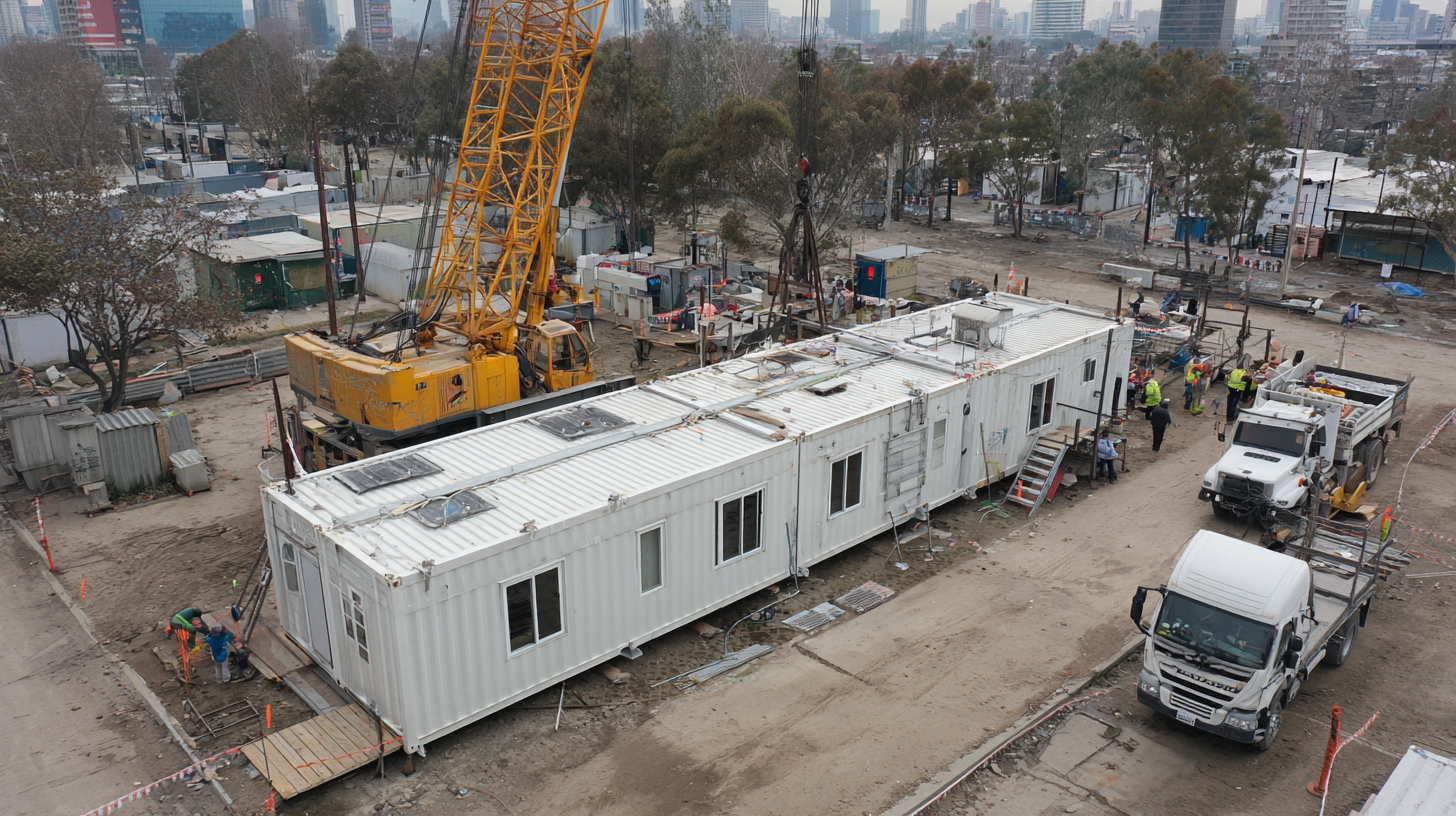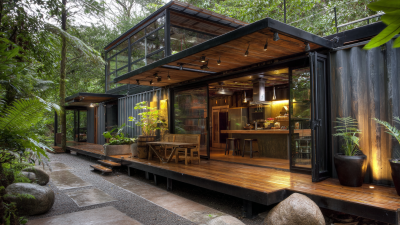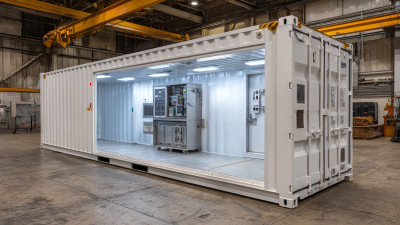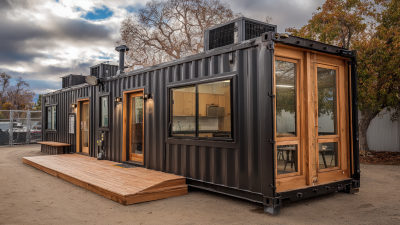Innovative Uses of Construction Containers in Sustainable Urban Development
In recent years, the urban development landscape has witnessed a transformative shift towards sustainability, prompting innovative approaches to construction practices. One standout solution gaining traction is the use of construction containers, which have emerged as versatile and eco-friendly building materials for various urban applications. According to a report by the World Green Building Council, buildings are responsible for 39% of global carbon emissions, highlighting an urgent need for sustainable strategies in construction. Construction containers not only offer a quick and cost-effective alternative to traditional building methods but also significantly reduce waste associated with conventional materials. Furthermore, a study by MarketsandMarkets indicates that the modular construction market, which includes container usage, is projected to grow to $157 billion by 2023. This growing interest in construction containers aligns perfectly with the paradigm shift toward greener cities, as they can be repurposed for everything from affordable housing to urban farming initiatives, emphasizing their pivotal role in the sustainable urban development toolkit.

Innovative Design Concepts: Transforming Containers into Multi-Functional Spaces
The innovative design concepts surrounding the transformation of shipping containers into multi-functional spaces are reshaping urban environments and contributing to
sustainable development. According to a 2021 report by the Global Urban Development Institute, there has been a
30% increase in the use of shipping containers for residential and commercial purposes in metropolitan areas. This trend reflects a
growing desire for flexible and adaptable living and working environments that can meet the diverse needs of urban populations.
Container architecture not only promotes sustainability through the repurposing of abandoned materials but also fosters community engagement. Projects such as
container-based community centers and pop-up markets provide spaces for local businesses and social interactions. A study from the American Institute of Architects indicates that
such developments can reduce urban land costs by up to
20%, making them an economically viable option for cities facing housing shortages. Furthermore, the modular
nature of containers allows for quick assembly and disassembly, showcasing an eco-friendly alternative to traditional construction methods that often produce significant waste and emissions.

Environmental Benefits: Reducing Waste and Promoting Recyclability in Urban Development
Construction containers, often regarded as mere storage units, can play a pivotal role in
sustainable urban development by significantly reducing waste and enhancing recyclability. By repurposing these containers, urban planners can minimize the environmental impact associated with traditional building materials.
The modular nature of containers allows for efficient construction processes, resulting in less waste generated during projects. This not only conserves raw materials but also reduces landfill usage, a critical concern in urban areas facing space constraints.
Moreover, construction containers contribute to a circular economy by promoting the recyclability of materials. As cities continue to grow, the demand for materials like steel used in containers can be harnessed and recycled multiple times without a loss in quality. This practice not only reduces the need for new raw materials but also lessens the carbon footprint associated with manufacturing processes.
By integrating innovative container solutions within urban landscapes, cities can move towards a more sustainable future, showcasing how adaptive reuse can effectively address environmental challenges while fostering economic development.
Case Studies: Successful Container-Based Projects in Sustainable Cities
In recent years, many cities have turned to construction containers as a solution for sustainable urban development. One notable example is the Container City project in London, which transformed a derelict area into a vibrant community space. This initiative utilized repurposed shipping containers to create affordable housing, artist studios, and recreational facilities. The design not only reduced construction waste but also demonstrated how adaptable and functional these containers can be in urban environments.
Another compelling case is the Urban Oasis project in Christchurch, New Zealand. Following the devastating earthquake, this initiative employed construction containers to provide temporary shelter and services for displaced residents. The containers were creatively designed into pop-up shops, cafes, and community hubs, emphasizing resilience and sustainability. By integrating eco-friendly practices such as rainwater harvesting and solar panels, the project showcased the potential of container-based architecture to foster community engagement while addressing immediate housing needs in post-disaster scenarios.
Community Engagement: Involving Residents in Container Development Initiatives
Community engagement is essential in leveraging construction containers for sustainable urban development. Initiatives like community gardens not only address food security but also create spaces for residents to connect, collaborate, and innovate. In Cleveland, partnerships between the city and local nonprofits emphasize the importance of community actors in fostering dialogue and action. By involving residents in the development process, these projects empower individuals to take ownership of their environment and advocate for solutions that meet their needs.
Moreover, cities such as Salzburg have demonstrated the value of establishing a communicative relationship between municipal management and local residents. Through community engagement programs, residents gain insight into urban planning initiatives, including the use of construction containers for various purposes such as affordable housing or recreational spaces. The exchange of ideas and concerns leads to more sustainable decisions and strengthens community bonds, creating a collaborative atmosphere that benefits all stakeholders involved. Engaging communities in these discussions can pave the way for innovative applications of construction containers, advancing both local economies and environmental sustainability.
Innovative Uses of Construction Containers in Sustainable Urban Development
This chart illustrates the various innovative uses of construction containers in sustainable urban development, highlighting community engagement initiatives. The data reflects the percentage of different applications that involve resident participation.
Future Trends: Evolving Technologies and Their Impact on Container Architecture
The future of container architecture is poised for transformation, driven by innovative technologies that enhance sustainability and adaptability in urban development. According to a recent report by the McKinsey Global Institute, the construction industry could reduce costs by up to 20% through the integration of modular design and prefabricated materials, such as shipping containers. These structures not only minimize waste but also expedite construction timelines, allowing cities to respond more effectively to housing shortages and urban sprawl.
One of the most promising trends involves the use of smart technology within container homes. By incorporating IoT devices, container architecture can achieve increased energy efficiency and improved living conditions. The World Green Building Council notes that buildings equipped with these technologies can reduce energy consumption by up to 30%. As urban areas invest in digital infrastructure, the opportunities for enhanced sustainability in container construction will expand.
Tip: When considering container architecture for urban development, ensure that your design incorporates energy-efficient materials and integrates smart technology for better resource management. Additionally, look into local regulations regarding zoning and permits to facilitate a smoother construction process. These steps can make a significant difference in the project’s success and its sustainability impact.

Related Posts
-

Exploring the Rise of Shipping Container Houses: A Sustainable Solution for Affordable Housing
-

Innovative Cargo Container Buildings Transforming Urban Living Spaces
-

Innovative Design Ideas for Sustainable Living with Freight Container Homes
-

Unlocking the Potential: Innovative Uses for Specialty Shipping Containers in Modern Industries
-

Revolutionizing Modern Architecture: The Rise of Cargo Container Construction in Sustainable Living
-

Transform Your Space: How Custom Built Shipping Containers Revolutionize Sustainable Living Solutions

